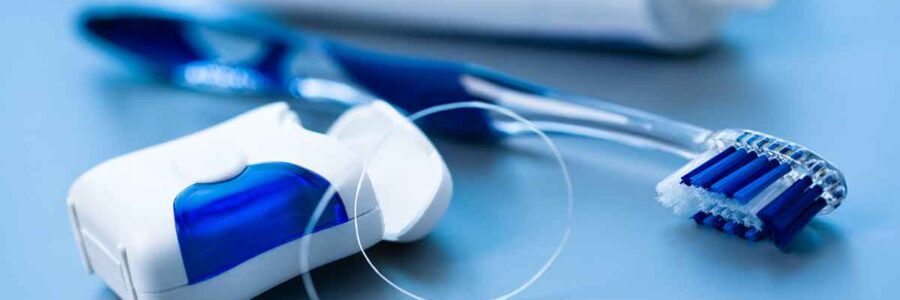The Dental Hygiene Staple That Might Be Harming You
Dental floss is a tool most of us use daily without much thought. It’s a staple of oral hygiene and widely promoted by dentists as essential for preventing gum disease and tooth decay. But emerging evidence suggests that not all floss is created equal—and some of the most popular flosses on the market may actually be introducing harmful substances directly into your mouth. At Cell Health News, we explore how these hidden exposures may be undermining both oral and systemic health.
The Plastic Fiber Problem
Many floss products are made from nylon or polyester—two forms of petroleum-based plastic known for their durability and stretch. While these qualities make floss less likely to break during use, they also come with a lesser-known downside: microplastic shedding. When you drag synthetic floss between your teeth, small plastic fibers can break off and become lodged in the gums. A 2022 study published in the Journal of Hazardous Materials found that microplastics can disrupt the function of critical cells in the gums, triggering localized inflammation and reducing the tissue’s ability to repair itself. This not only jeopardizes gum health but creates a route for harmful substances to enter the bloodstream.
PFAS Exposure Through Oral Absorption
In addition to plastic microfibers, many floss products are coated with per- and polyfluoroalkyl substances (PFAS), including brands marketed as “easy-glide” or “comfort” floss. These chemicals are used for their water-repellent and non-stick properties—similar to what’s used in nonstick cookware. While that might sound convenient, PFAS are persistent environmental pollutants that remain in the human body for years. A study by Harvard researchers confirmed that certain floss users had higher levels of PFAS in their blood, indicating that these chemicals are being absorbed directly through the gums. PFAS exposure has been linked to serious health conditions such as liver damage, thyroid dysfunction, lowered immunity, and even developmental problems in children.
BPA and BPS: Hormone Disruption at the Gum Line
Another layer of concern lies in the presence of bisphenol A (BPA) and bisphenol S (BPS), which are often used in the production of dental floss and other plastics. These chemicals are known endocrine disruptors, capable of mimicking or interfering with natural hormones in the body. Even in small amounts, BPA and BPS have been linked to reproductive issues, insulin resistance, thyroid imbalances, and altered brain development. According to the Reproductive Toxicology journal, BPA exposure can negatively impact both prenatal and adult hormone regulation. When these chemicals are used in floss, they can enter the body through the highly absorbent tissues of the mouth—posing a unique threat because of the direct bloodstream access.
Systemic Effects of Oral Exposure
Your oral cavity isn’t an isolated system—it’s a gateway to your entire body. Chronic exposure to microplastics and chemical coatings through flossing can contribute to systemic inflammation, which is a known driver of nearly all chronic disease. Conditions like cardiovascular disease, autoimmune dysfunction, and cognitive decline often have roots in prolonged, low-grade inflammation. Poor gum health, once thought to be a cosmetic concern, is now understood to be a major contributor to these deeper health issues. The idea that flossing with a toxic product could be doing more harm than good should be a wake-up call to anyone serious about their health.
Why Safer Alternatives Matter
Thankfully, the solution is not to stop flossing—it’s to floss smarter. Choosing non-toxic floss made from natural materials like silk or plant-based fibers is a simple yet powerful way to reduce daily chemical exposure. Silk floss is strong, effective, and biodegradable, especially when coated with natural beeswax. It gets the job done without introducing microplastics or chemical residues into your system. Plant-based options made from corn fiber or bamboo charcoal are also gaining popularity and offer a vegan-friendly, non-toxic alternative that performs well in tight spaces.
Supporting Oral and Systemic Health Together
Interdental brushes and wooden toothpicks also offer effective ways to clean between teeth without toxic coatings. Interdental brushes are particularly useful for those with braces, dental work, or wider gaps between teeth. Wooden toothpicks, when made from natural hardwood and left uncoated, can help remove food particles without compromising your health. These alternatives may seem simple, but they make a big difference in your effort to support whole-body health by reducing daily toxic exposures.
Take a Closer Look at the Small Things
It’s easy to overlook small, habitual tools like dental floss when thinking about your health, but these seemingly minor choices can have a significant cumulative effect. The average person flosses once a day—365 times per year. That’s 365 exposures to potential microplastics, PFAS, and forever chemicals. It’s time to re-think your flossing!
References:
- Sarkar, Pradip, et al. “Microplastics and Their Impact on the Gut Microbiota: An Emerging Threat to Human Health.” Journal of Hazardous Materials, vol. 429, 2022,.
- Harvard Harvard T.H. Chan School of Public Health. “Is Your Dental Floss Toxic?” Harvard T.H. Chan School of Public Health, 8 Jan. 201.
- Rochester, Johanna R. “Bisphenol A and Human Health: A Review of the Literature.” Reproductive Toxicology, vol. 42, 2013, pp. 132–155. National Center for Biotechnology Information.
- Simon, Matt. A Poison Like No Other: How Microplastics Corrupted Our Planet and Our Bodies. Island Press, 2022.


